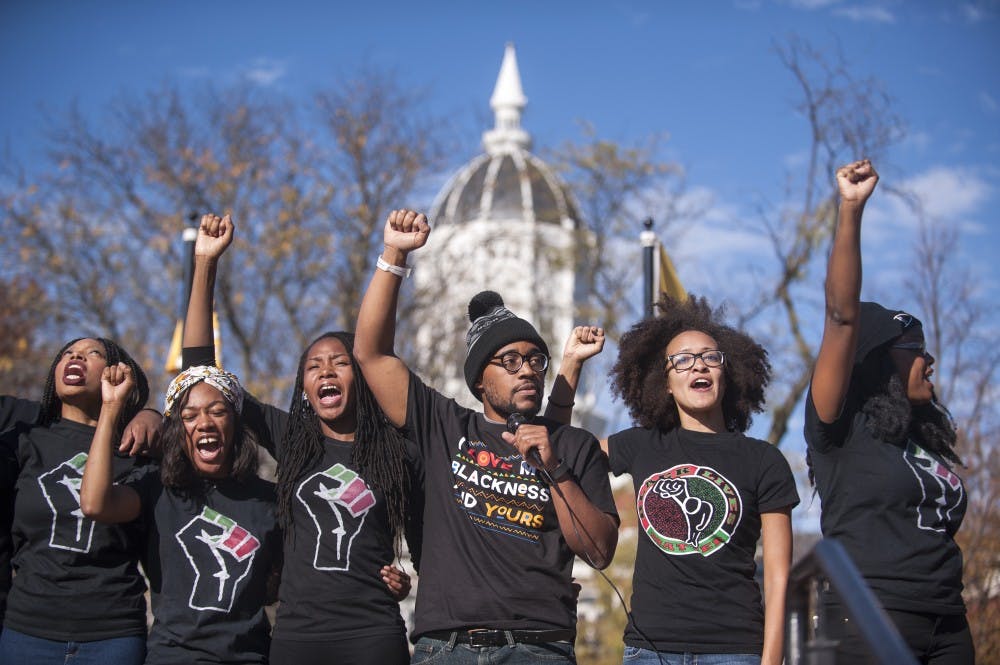I attended the University of Missouri (MU) for my freshman and sophomore years of college. I also lived in Columbia, Missouri, for four years before attending school at MU.
I’m now a senior here at the University of South Carolina.
I’ve resisted writing my take until the story is no longer developing at a breakneck pace. But I cannot stay silent when my former school and community have been thrust into chaos and become a racial flashpoint in our country.
I am white, so I cannot speak to systematic oppression on the campus or how black students at MU feel. But I can speak to the climate of the university, or at least what I saw and experienced when I was there just a few years ago. And having dozens of friends who are MU students and alumni, I can hopefully give readers a sense of what’s going on since I have been following this story for months, long before the national media.
I disagree with the notion that MU is a campus inherently filled with racial hatred. However, the year before I arrived on campus, cotton balls were dumped outside the school’s Black Culture Center. While I was there, the n-word was spray-painted in large letters on a statue in front of the dormitory next to mine by a student. It’s pretty hard to pretend racism doesn’t exist in your community when things like that happen.
In response, the campus announced a diversity initiative called One Mizzou. It became a mantra and a slogan for the entire university, and diversity became something that was celebrated by the school.
When I left the school, it was not the racial minefield it is today.
Perhaps it was a coincidence, but soon after the initiative was ended this summer, racial tensions started to simmer once again at MU. A new chancellor seemed to place much less emphasis on these issues.
The most important thing for people to understand is that this did not happen overnight. It was the product of several ugly incidents of racism on campus this semester, which were met with inaction and dismissiveness by the school’s administration. Even after escalating their protests following each incident, the concerns of black students at MU were repeatedly ignored for days or they were told to wait until January or April for change.
I may not agree with all of the tactics of the protesters, such as blocking a public space to the media and students and enlisting faculty to bully other students, but I applaud them for taking a stand that racism was unacceptable on campus and immediate action was needed. Reading their demands, these are things that should happen at MU regardless of protests. If I were still a student there, I would be standing, marching and sitting in with Concerned Student 1950 — or at least doing what I could to make their voices heard.
Regarding free speech, I say you are free to stand on the street corner and shout the n-word at the top of your lungs if you please. Diverse opinions are what make America great, and of course we air them here in the opinion section. But when you use racial slurs to terrorize or threats of violence to try and terrorize people (both of which happened at MU) you lose your rights — in my opinion.
Former MU System President Tim Wolfe and former Chancellor R. Bowen Loftin were caught in a difficult position. How can you end racism on campus? As we’ve seen here at USC, it is not an easy process. But the main difference here is that our administration has responded quickly to ugly incidents rather than ignoring them or promising action down the road.
The most striking thing to me is that black students weren’t being listened to. The chancellor and president, two old white men, weren’t hearing their anger and their pain. And even when they did, they seemed to think the problem could be kicked down the road. Only when the football team threatened the school’s bottom line did they finally wake up to just how serious this problem was and did the dynamic finally shift.
One could argue that when Michael Brown was shot by Darren Wilson in Ferguson, just hours away from MU, the entire dynamic of race in America shifted as it has so many times before.
Now it has shifted once again.
It’s not enough to condemn racism and white privilege. Actions speak louder than words, and MU failed to act. As an institution of higher learning, they must be a leader on issues of diversity, racism and inclusion, not a place where racists feel safe in a mob. Now schools all across the country, including ours, are stepping up where MU failed.
There are so many sides to this story. But the biggest takeaway for the country should be that universities must be leaders on this issue, not places where racism is allowed to fester.
I wish the best for my former school, and my current school, as they try and live up to that standard.

